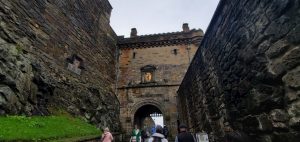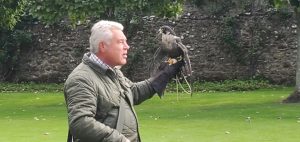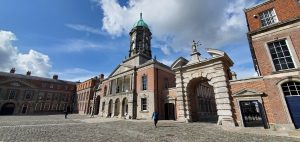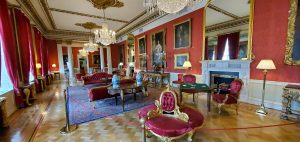Last week we talked about three amazing castles that we visited in England in September. There are so many more, both in the city of London and throughout the countryside that you could spend your whole visit just going from one castle (or palace) to the next.
After London we spent time on a cruise around the British Isles so we got to visit one of the most iconic castles in Scotland, Edinburgh Castle. We also toured Dunrobin Castle near Inverness, and Dublin Castle while in the capital of Ireland. 
Although we had been to Edinburgh Castle before we decided to tour it with a guide. We have found guides offer knowledge and enthusiasm for the subject that just makes for a better overall experience. Euan from Little Fish Tours (https://littlefishtours.co.uk/) was an excellent example. He walked us through various vantage points on the castle grounds and regaled us with stories about the history of the castle and Scotland overall.
Guides are not allowed inside any of the buildings but we were left with plenty of time to visit the crown jewels, State Apartments, National War Museum and the War Memorial. All of these displays are worth you time and will add to your overall understanding of Scotland’s storied past.
Apartments, National War Museum and the War Memorial. All of these displays are worth you time and will add to your overall understanding of Scotland’s storied past.
The next day we landed in Invergordon to explore the highlands of Scotland. We took a full day tour that included a visit to Dunrobin Castle. Dunrobin’s origins lie in the Middle Ages, but most of the present building and the gardens were added Barry between 1835 and 1850, and remains the seat of the clan Sutherland. Once a boarding school the home is now open to the public.

The grounds and gardens are beautiful to explore and we were treated to a falconry display which we found most interesting. The castle itself is brilliantly decorated and offers an insight into how the nobility lived in the 19th century. The rooms were filled with family portraits, well used furniture and memorabilia. When we entered there was a large roaring wood fire burning in the hearth that provided needed warmth and smelled wonderful. It really felt like we were visiting someone’s home.
interesting. The castle itself is brilliantly decorated and offers an insight into how the nobility lived in the 19th century. The rooms were filled with family portraits, well used furniture and memorabilia. When we entered there was a large roaring wood fire burning in the hearth that provided needed warmth and smelled wonderful. It really felt like we were visiting someone’s home.
Our final castle stop was in Dublin, the capital of Ireland. Constructed in the early thirteenth century on the site of a Viking settlement, Dublin Castle served for centuries as the headquarters of English, and later British, administration in Ireland. In 1922, following Ireland’s independence, Dublin Castle was handed over to the new Irish government. It is now a major government complex.

The visit offers a guided tour but we were unable to take advantage of it as we did not have enough time to wait. Instead we wandered through on our own to see the well appointed rooms and the historical and military displays of Ireland’s proud history. You can find out more about planning your visit at https://www.dublincastle.ie/. 
Touring castles is a great way to understand a county’s history, the conflicts that shaped its history, and its current perspective on governance. They seem to hold the memories of decades, even centuries of the land and people they house and protect.
